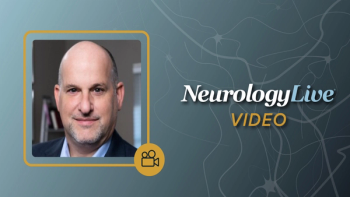Welcome to this special edition of Neurology News Network. I’m Marco Meglio.
According to an announcement, the FDA has issued a complete response letter (CRL) to Alnylam Pharmaceuticals for patisiran, an RNAi therapeutic, for the treatment of patients with cardiomyopathy of ATTR amyloidosis. Patisiran, an intravenously administered therapy, has already been approved as a treatment for polyneuropathy of hereditary ATTR amyloidosis in adults. In its release, the FDA noted that the clinical meaningfulness of patisiran’s treatment effects for the cardiomyopathy of ATTR amyloidosis was not confirmed. Thus in its present form, the company’s supplemental new drug application (sNDA) for the therapy could not be approved. No issues with clinical safety, study conduct, drug quality or manufacturing were indicated in the CRL. As a result, the company plans to no longer pursue an expanded indication for patisiran in the United States.
According to an announcement from Gain Therapeutics, dosing has commenced for the phase 1 trial of GT-02287, an agent in development for the treatment of GBA1 Parkinson disease (PD), the most common genetic form of PD. So far, 2 healthy individuals have received dosing in the single-center, placebo-controlled study. The trial is randomized, double-blind study that features both a single- (SAD) and multiple-ascending dose (MAD) component. Mainly intended to evaluate the safety and tolerability of GT-02287, the study includes several secondary objectives such as the pharmacokinetics of SAD and MAD dose levels to identify a maximum tolerated dose as well as identify recommended doses for further clinical development.
Findings from a comparative effectiveness research study showed that use of levetiracetam and lamotrigine as first-line treatments have similar efficacy on idiopathic generalized epilepsy (IGE) syndromes in females; however, levetiracetam was more effective in treating juvenile myoclonic epilepsy (JME). Further studies are still needed to identify the most effective antiseizure medication (ASM) alternative in other IGE syndromes. Published in JAMA Neurology, the trial included 543 patients from 22 primary, secondary, and tertiary adult and child epilepsy centers who were prescribed either levetiracetam (57.5%) or lamotrigine (42.5%). Followed up for a median of 60 (24-108) months, the trial featured only females of childbearing age, diagnosed with IGE according to International League Against Epilepsy (2022) criteria. The 4 distinct IGE syndromes include childhood absence epilepsy (CAE; n = 2), juvenile absence epilepsy (JAE; n = 107), JME (n = 259), and idiopathic generalized epilepsy with generalized tonic-clonic seizures alone (GTCA; n = 175).
For more direct access to expert insight, head to NeurologyLive.com. This has been Neurology News Network. Thanks for watching.




























